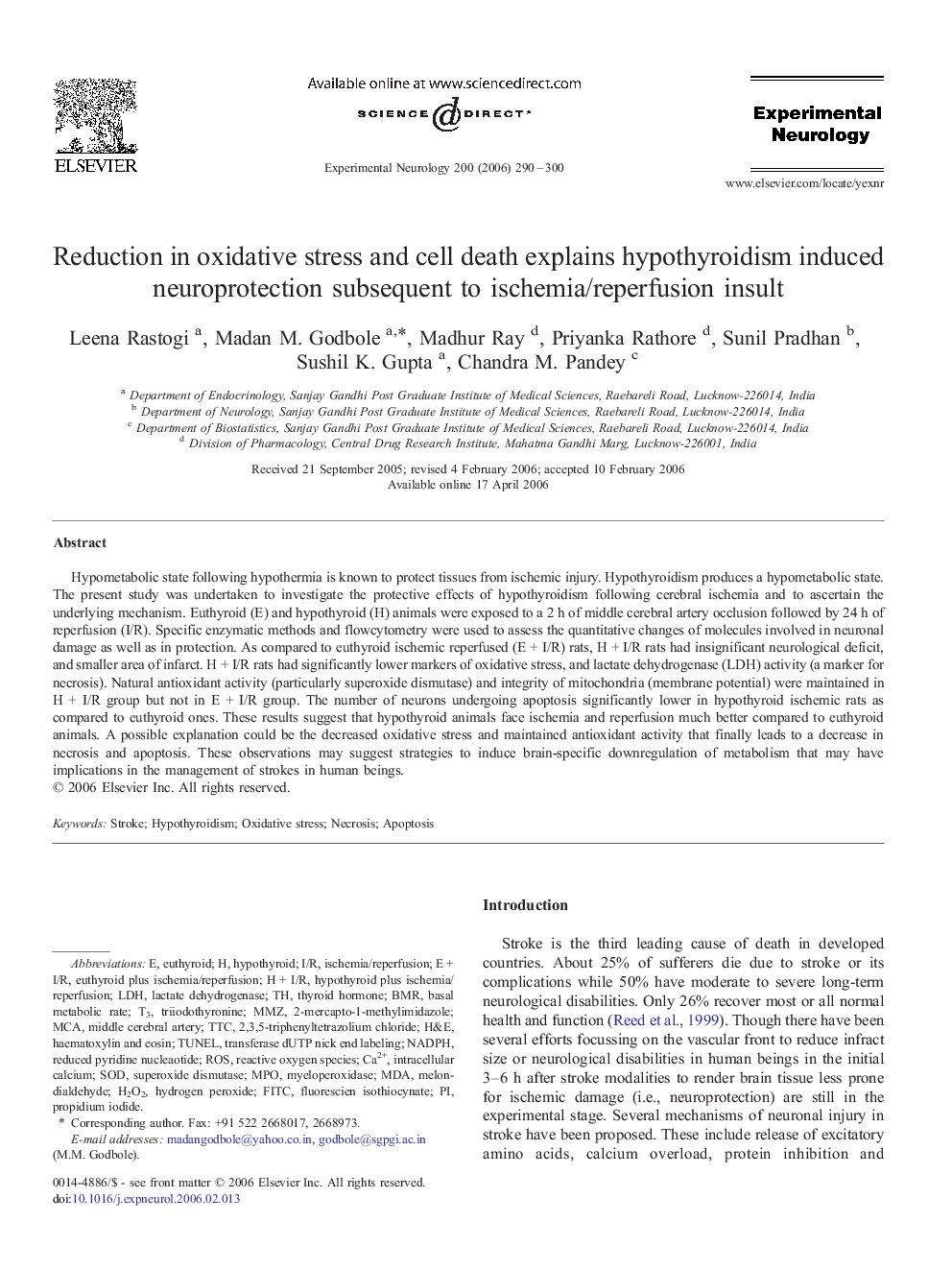| Article ID | Journal | Published Year | Pages | File Type |
|---|---|---|---|---|
| 3057065 | Experimental Neurology | 2006 | 11 Pages |
Hypometabolic state following hypothermia is known to protect tissues from ischemic injury. Hypothyroidism produces a hypometabolic state. The present study was undertaken to investigate the protective effects of hypothyroidism following cerebral ischemia and to ascertain the underlying mechanism. Euthyroid (E) and hypothyroid (H) animals were exposed to a 2 h of middle cerebral artery occlusion followed by 24 h of reperfusion (I/R). Specific enzymatic methods and flowcytometry were used to assess the quantitative changes of molecules involved in neuronal damage as well as in protection. As compared to euthyroid ischemic reperfused (E + I/R) rats, H + I/R rats had insignificant neurological deficit, and smaller area of infarct. H + I/R rats had significantly lower markers of oxidative stress, and lactate dehydrogenase (LDH) activity (a marker for necrosis). Natural antioxidant activity (particularly superoxide dismutase) and integrity of mitochondria (membrane potential) were maintained in H + I/R group but not in E + I/R group. The number of neurons undergoing apoptosis significantly lower in hypothyroid ischemic rats as compared to euthyroid ones. These results suggest that hypothyroid animals face ischemia and reperfusion much better compared to euthyroid animals. A possible explanation could be the decreased oxidative stress and maintained antioxidant activity that finally leads to a decrease in necrosis and apoptosis. These observations may suggest strategies to induce brain-specific downregulation of metabolism that may have implications in the management of strokes in human beings.
